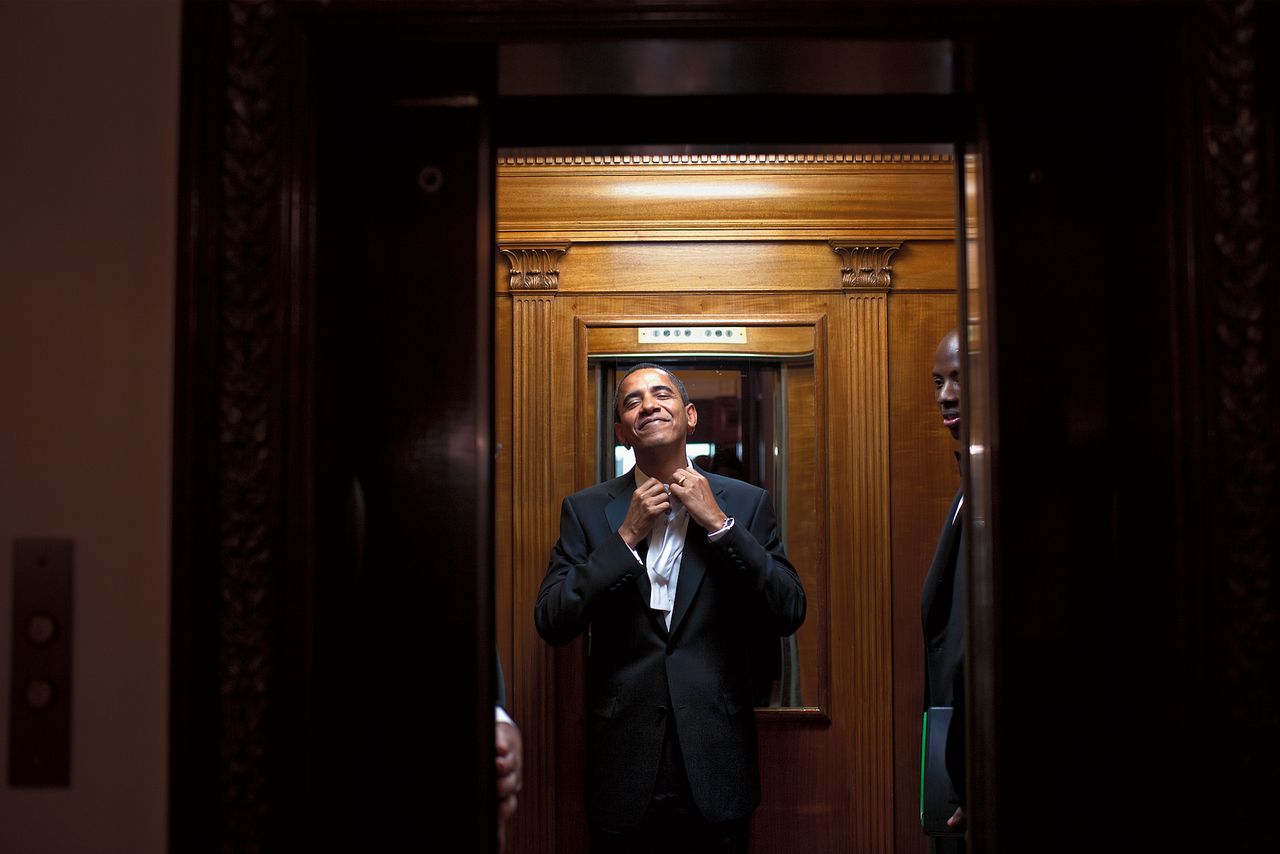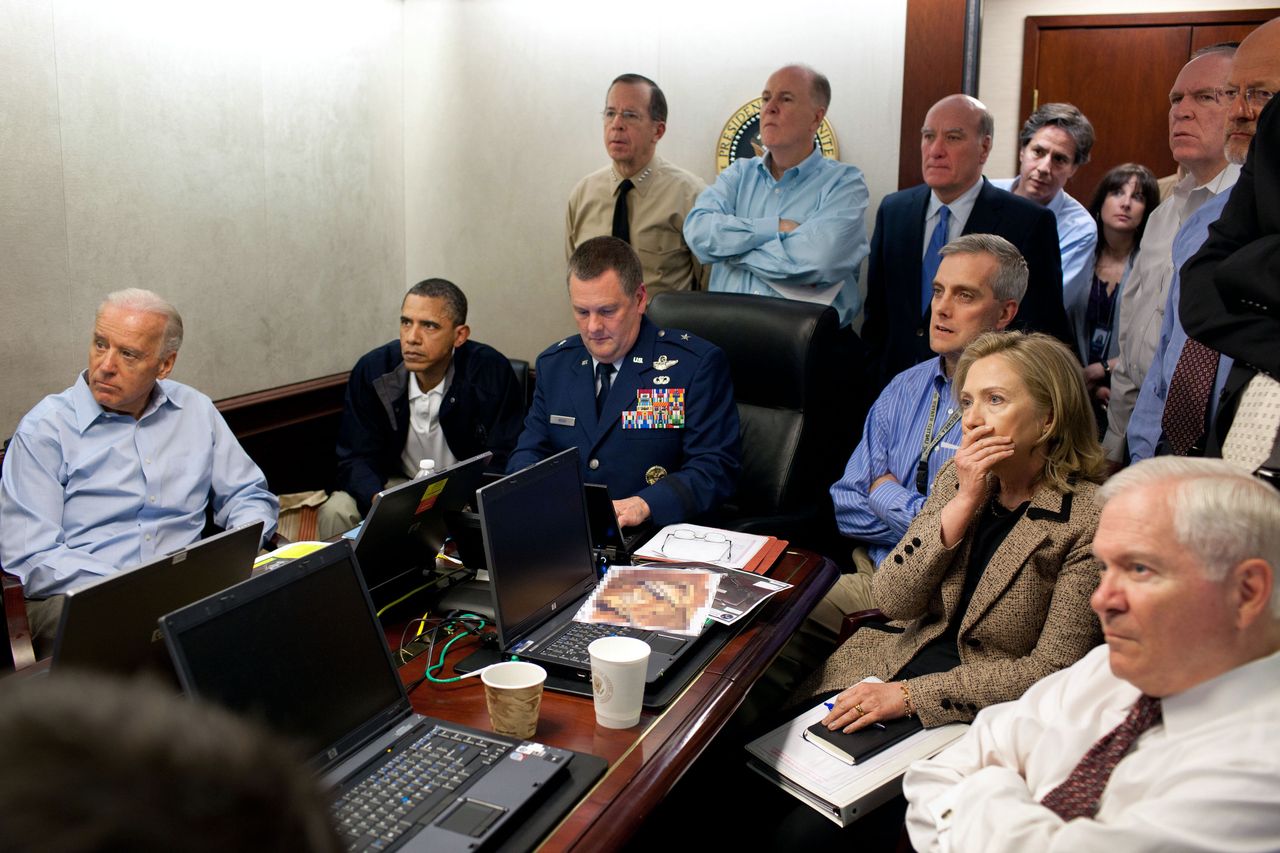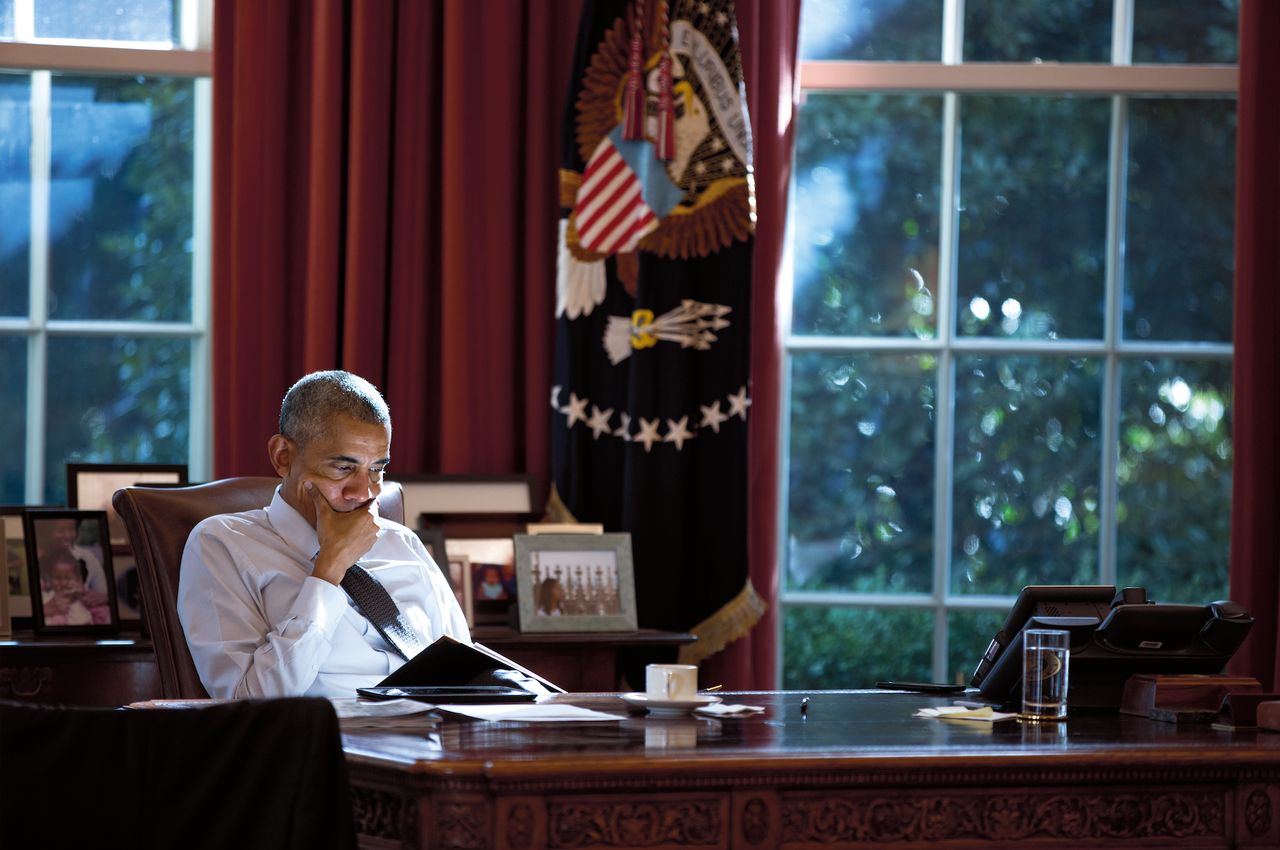“It doesn’t really matter how hard it was to get a certain photograph, what matters is how people react,” Pete Souza says.
The veteran photojournalist who covered Barack Obama as Chief White House photographer has collected three hundred of his most iconic images in a new book, Obama: An Intimate Portrait.
And in the age of video, Souza is a fierce advocate of the power of the still image. “With a still photograph the visual is still the most important component,” he says. “To be successful in video, sound is the more important component.
“I think there is something powerful about the still image that is vitally important for capturing these historic moments, much more so than video.
“It’s easier to maintain access as a still photographer than it is as a videographer. By that I mean people know what’s being said is being captured by audio so they may change the way they say things. And I think it can be detrimental to what’s taken place when you have a video camera with audio in the room.”

And being “in the room” during the Obama presidency is what allowed Souza to document the tumultuous eight years for history. “It was accepted I should be there for all these important moments,” he says.
“One is from the Bin Laden raid. That was a historical, big, event. Especially for our country. That finally we were able to get this guy that caused the biggest terrorist attack on our country - so that was a weighty picture, it was a tense situation.
“If that picture hadn’t become well known I’d still remember that day. The tension of that day. The anxiety of that day.”

“You have a picture like that from a big historical situation and it gets a lot of attention. It’s widely known.
“And yet the other picture that people seem to gravitate to is the one of the president leaning over whilst this four year old kid touches his head, because his haircut looks like his. The kid is touching the hair of the President of the United States who looks like him. They have the same colour of their skin.
“That’s a small event. It’s an essentially insignificant event and yet that moment that was captured, just a photo with the family, turns out to take this huge significance. That tells you a lot about this president and him as person.”
Souza got to know Obama when he was elected to the United States Senate in 2005. “I was working for the Chicago Tribune based in Washington DC and began to cover him as a newspaper photographer and went on a couple of overseas trips with him. because of that he got to know me a little bit.
“He got to see how I worked. And so when the time came when he was elected to the presidency he asked me to do this job.”
Souza, a veteran photojournalist by the time he accepted the job in the Obama White House, says he did not change how he did the work. “Clearly I was the inside guy. But I am still trying to do the same kind of pictures that I would if I was a journalist. You don’t suddenly take different pictures. You’re still trying to do things the same way.
“But there is a certain freedom about not trying to get the right picture for today’s newsprint. You’re really trying to document for history. In terms of the approach you’re taking to the photo coverage. It’s for the long term.”
Despite the longterm mindset, Souza’s photos were often quickly published by the White House on its Twitter, Instagram and Flickr pages. But he says this did not particularly influence the job. “I still would have made the same pictures, it’s just people wouldn’t have seen them right away.
“We did decide to make a lot of these public, not necessarily in real time, but in a week or two after they were taken. So that added the burden on our workload but it didn’t really change how I the pictures I took.
“I was still in control. It wasn’t like there was someone from the press office looking over my shoulder at every picture I took and saying ‘that’s the one’. I would decide or one of the photo editors who worked with me would decide what were the best pictures and then those would then be shown to our press office before they were made public.
He adds: “That was important to me. To not have a non-photo-editing professional decide. It was important to have me the photography professionals decide which is the best photo.”
The Obama years were not the first Souza covered from inside the White House. He also worked as an in-house photographer, although not the chief, during Ronald Reagan’s presidency. Would he have liked to stayed in post after the 2016 election?” I wouldn’t have done it for Trump,” he says. “And I don’t think I would do it for anybody. I wouldn’t have done it for Hillary. I wanted out.”
Since Trump took office, Souza has also been using Twitter and Instagram to subtly point out the differences between the current White House incumbent and his predecessor.
Yet he reveals he may have taken the job in the Trump White House had he come to power ten years ago. “That would be different. If I was younger and there was a more time in between, I might do it again,” he says.
“This is a job for a younger person. And I think it’s also probably good to have not always have the same person in there doing the job.”
Obama: An Intimate Portrait by Pete Souza is published by Allen Lane
